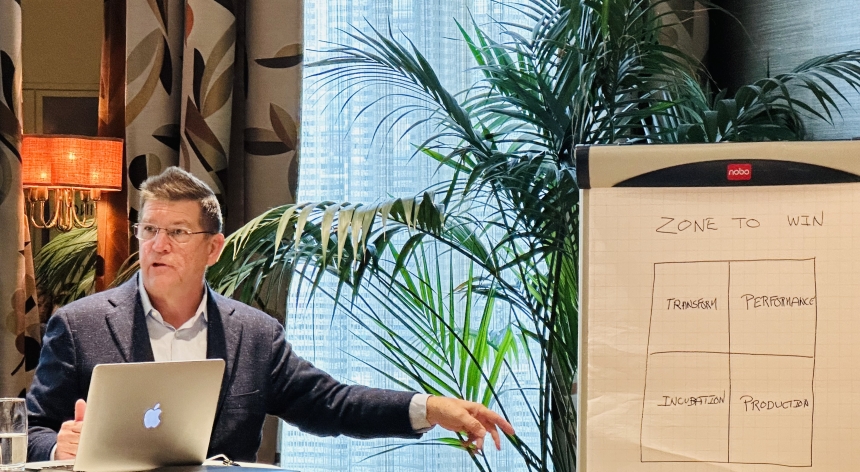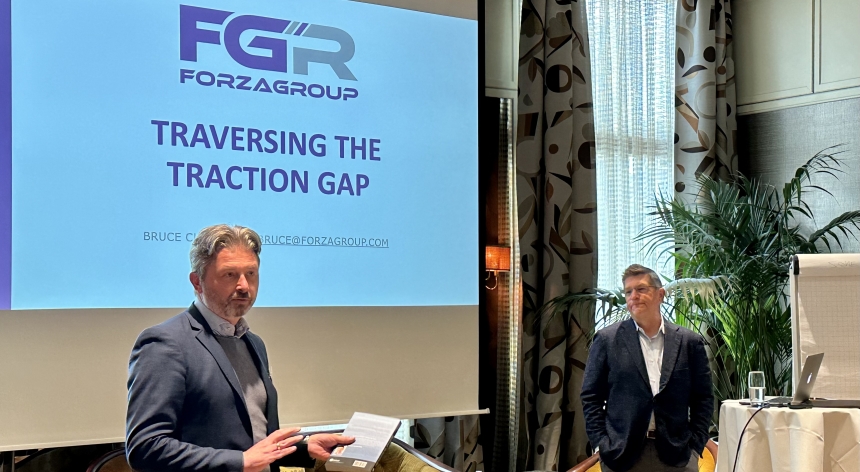Engineer a market where you become the “Category King”
Engineer a market where you become the “Category King”
Don't accept the market as it currently exists. Instead, either define a new category or redefine an existing category and install your company as the leader through “market engineering.”
That's the advice from Bruce Cleveland, a man who contributed strategically as either an operating executive or investor to no less than 4 unicorns. He shares the recipe for phenomenal growth with Fortino portfolio companies. What category are you creating or defining? Do you know how to engineer the market for that category?
Bruce Cleveland was an executive and/or investor in companies such as Oracle, Apple, Siebel Systems, C3.ai, Marketo, and several other technological market leaders when most were very early-stage private startups. He observed and learned from his experiences working with some of the best and brightest business leaders in the technology industry. For example, Siebel Systems grew in just five years from 20 people and $2 million in revenue to 10,000 people and $2 billion in revenue and invented the category now known as Customer Relationship Management (CRM). In 2005, Oracle Corporation acquired the CRM market leader for $5.8 billion. It's a dream for scale-ups and investors.
Luckily, Cleveland documented his 43 years of experience in technological companies in his book titled “'Traversing the Traction Gap”, a prescriptive guide that shows how you can engineer a market for products and solutions. In addition, he occasionally shares his expertise through keynotes and workshops with universities, start-ups, and scale-ups.

Define or Create Your Category
The core message from the successful marketer and investor? Don't enter an existing market, create a new one or redefine one if it currently exists. The market leader of an existing market owns the definition of the category and customers in that market. Cleveland says, "Invent or define a new category and become the recognized thought leader in it. If you try to enter an existing category, the current leader will invariably prevent you from succeeding.
Good examples of categories that were once unknown are CMS, ERP, Cloud CRM, and Enterprise AI. When these terms and categories were first introduced by innovative companies, they were unknown. However, after significant investment in category design, thought leadership, storytelling, messaging, and positioning (the basic tenets of “market engineering,” the technology industry now recognizes these categories, terms, and their market leaders. Companies such as SAP, Spotify, Apple, Marketo, and Salesforce are just a few category leaders that come to mind.
During a workshop in Amsterdam, CEOs of B2B SaaS companies brainstormed their categories. Some of the mentioned categories were outsourcing document handling, inspection management solutions, asset performance management, employee satisfaction software, and sensor data quality management.
"Your category should have international significance and relevance," Cleveland remarks. "Involve a native English speaker with a sense of the right terms, nuances, and tonal colors to help you name and define your category. Stay away from ambiguous terms. Look for words that describe the problem. It’s great to invent your own terms and vernacular but if you only use your own special language, prospective customers won’t know and use them and won’t be directed to your website. Instead, attract visitors with familiar search terms then” introduce your new terms and vernacular when they are on your site. Then, you have the opportunity to explain what sets you apart."

Operate as a “Market Engineer”
Creating or defining a category is one of the five tenets Cleveland calls 'market engineering', a term he created and explains in his book. The other tenets include positioning yourself as a thought leader, telling a story, crafting a consistent message, and positioning yourself against an existing category, company, or market.
"Throughout my career, I've seen and used these market engineering techniques to separate the winners from the losers," says Cleveland. "Companies and management teams without market engineering skills invariably fail. Steve Jobs was undoubtedly one of the finest “market engineers,” unparalleled in his industry. He permanently redefined the phone and tablet categories, for example.
Along with your story for prospective customers (product features and benefits), you must develop a story for investors. However, Cleveland argues this story needs to be a little different. "Most entrepreneurs focus their presentations to early-stage investors on “product engineering” and how great their product is (or will be). Sadly, they present few details on how they will generate awareness and interest in their products, but this phase is the most crucial and costly for the startup and its investors. Failure to generate traction – adoption – with powerful go-to-market strategies is what leads to more than 80% of all startups failing outright. For B2C startups, market research shockingly shows that nearly 96% fail.
Market research shows that the number one reason startups fail is due to “no market need.”
As an early-stage venture investor, I invested primarily in startups with just a slide deck – a few founders, no product, no customers, and no revenue. Some have paying customers based solely on a concept or prototype. They then build the product. I had to develop “proxies” for financial metrics that most investors use to make an investment decision."
His advice? "You must present a financial product to potential investors. You can demo your actual product but if it is a B2B application, it is unlikely they will ever use it. Your job is to show investors what customers and prospective customers think about your product(s) and demonstrate how you will engineer the market with go-to-market techniques that include how you will acquire customers and the cost of acuiring and supporting them."

Traverse the Traction Gap
For the 'go-to-market' phase, Cleveland coined the term 'traction gap'. "This is the most dangerous and tumultuous period for start-ups and scale-ups. This is when more than 80% of start-ups faill and 95% don’t achieve the projected ROI. Why? Because the existing market doesn’t know or believe it needs them!"
'Traversing The Traction Gap' is for entrepreneurs and investors and offers a prescriptive guide through this potential graveyard and provides a path towards explosive growth. The traction gap begins at the initial go-to-market phase when the company declares it has a “minimum viable product” (MVP) and only ends if the company is able to reach a point Cleveland labels “minimum viable traction” (MVT). "Once you declare you’ve reached an MVP, the investors’ clock starts ticking. This is when you really focus on your ability to market, sell and generate revenue," emphasizes Cleveland. "At MVP, you only have 1.5 to 2 years to evolve towards the next critical point Cleveland describes in his book as “minimum viable repeatability” (MVR) and 6 to 10 million euros in revenue. If you can’t achieve this objective, the data shows that your ability to raise a subsequent round of capital from your current investors or new investors diminishes significantly.
"So, before you build a product and/or meet with potential investors,” Cleveland says, do your homework. ”Do you have the four foundational pillars of the Traction Gap Framework covered - product, team, revenue, and systems? Engage intensively with the market, interview potential customers, and learn what they're willing to pay. Build a financial product/story for investors based on what you learn. If what you learn indicates you're on the right track, then you can begin meeting with prospective early-stage investors, writing the code for your MVP, and other resource-intensive tasks."

Scaling After You Achieve Market Validation
Cleveland also sets a deadline for the next phase: "To keep investors interested, you have about a year to evolve from “minimum viable repeatability” (MVR) to “minimum viable traction” MVT: from about 3 million to 10 million euros in annual revenue." From there, the next phase is 'Go-to-scale'. For this, Cleveland refers to fellow authors and investment partners such as Fortino to grow from a solid foundation and established system into a global market leader and revenue of 1 billion and more.
Yet, remember his advice and the Traction Gap Framework, because... "As you introduce new products and and services, you will find yourself back in the Traction Gap, the challenging “go-to-market phase” including the need to create/define a new category and to successfully engineer a market for your innovations."